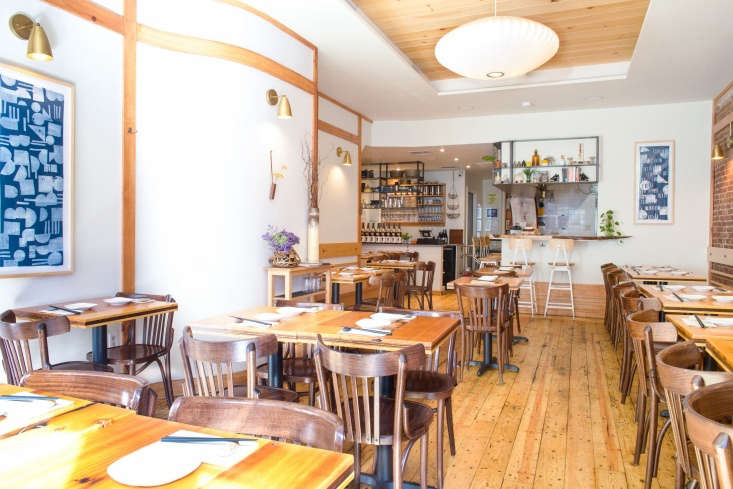The pot holding a fiddle-leaf fig tree in a corner of the restaurant isn’t the only thing that Bessou’s owner Maiko Kyogoku brought from home. On any given night, you might also see her father stationed in back, making Japanese sauces. “He’s a big part of the operation,” she says of her dad, who used to run his own sushi restaurant on the Upper West Side.
The light-filled, minimalist interiors of Bessou in downtown Manhattan have an overlay of nostalgia, from the traditional Japanese design elements to the carriage bolts that Kyogoku selected because they remind her of a childhood memory. The result? An interior space that references the authenticity of the past, with a few modern twists.
Here are 10 ideas to steal.
Photography courtesy of Michelle Min and Heather Stern for Bessou.
1. Embrace the new false ceiling.

2.Celebrate architectural quirks.

3. Consider a palette of pine.

4. Practice deconstructed ikebana.

5. Complement minimalist interiors with quiet patterns and textures.

6. Store high and low.

7. Shop your memories.

8. Create clever dividers.

9. Seek out seconds.

10. Practice destination dining.

For more downtown New York City restaurant decor, see:
- French Glam on a Budget: 15 Ideas to Steal from Mimi, New York’s Sexiest Bistro
- The Guild: A Glamorous New Emporium in SoHo from Roman & Williams
- Bauhaus on the Bowery: De Maria Cafe in NYC





Have a Question or Comment About This Post?
Join the conversation